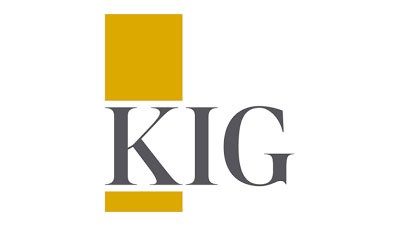New Video Visualizes And Calms The Fears Of Oversupply In Downtown Market
Over the last several months, there have been whispers and fears of a potential oversupply of Class-A housing, but a new video from Bisnow partner KIG Analytics, the market research arm of multifamily brokerage firm KIG, should alleviate these fears.
Using well-respected industry data and its own market surveys, KIG Analytics’ team produced a time-lapse animation showing the projected lease-up timelines for new developments in downtown Chicago through 2018. Based on their findings, the team believes that while there may indeed be a potential oversupply of housing in the next few years, it won’t be the dramatic tailspin that doomsayers have been predicting.
What Does The Video Show?
The video tracks the lease-up of multifamily developments under construction or in the planning process throughout Chicago’s downtown neighborhoods—including the Gold Coast/Near North, River North, South Loop, South Streeterville, The Loop/New Eastside and West Loop/River West.
In the video, when a new property hits the market, it's shown as a column where the height represents the total number of units in the development that haven’t yet been leased. This number decreases—and the column shrinks—each month as units in the development are leased.
KIG Data Analytics Officer Marc Rutzen says that when creating this animation, the team was acting under the assumption that each new building would capture its proportional share of the demand for new units in the market.
“If we know the total number of units available in the market and the historic demand for housing,” Marc explains to Bisnow, “we can estimate the number of units each new development will be able to lease in any given month.”
That doesn't mean bigger is necessarily better, Marc says, adding “although bigger buildings lease more units each month, they don’t achieve lease-up faster because they start off with more units to lease.”
It's clear in the video that as time goes on, and more units fill the market, the rate at which each individual property leases up will lengthen as more properties compete for a limited share of total demand.
“This unique application of data allows our clients to be more informed of upcoming deliveries and new product that's proposed for the market,” says KIG managing partner Todd Stofflet. “They are also using it to alleviate any fears of oversupply when discussing a potential development or acquisition.”
Where Did The Data Come From?
Marc explains that the video’s foundational data comes an organization that has tracked the historical and projected demand for multifamily and condominium properties with over 100 units for over 20 years.
Based on this data alone, Marc says, the overall, historical demand for new living space in downtown Chicago has been approximately 3,100 units per year. Marc and the KIG Analytics team, however, decided to expand the data pool to include properties with fewer than 100 units.
“The original data uses these criteria because the institutional market traditionally has only looked at buildings with more than 100 units,” Marc tells Bisnow. “We have Class-A clients with buildings offering fewer than 100 units. Developers and investors are looking at these sub-100-unit properties, and these properties are competing for leases. By looking more broadly, and using a different definition of what constitutes a new property coming on line, we can give a more complete picture of the market.”
By combining the original data with the data KIG has acquired from its own sources and research, Marc and his team found that the historical average absorption rate inflated to approximately 3,500 multifamily new construction units (including both condominium and apartments) per year. The team projected this level of demand over the next three years across Chicago’s downtown neighborhoods, allocating it proportionately based on the projected total number of new construction units on the market each month.
What Can It Teach Us?
According to the video, Marc says, the amount of new supply on the market could peak in Q4 ’17. If no new supply is added after this point, it could take up to 16 months to lease all of the units on the market. Although this seems high, Marc notes, this situation will only arise in the rare scenario that all the projects under construction and all proposed projects are completed.
Otherwise, the average lease-up periods should remain at nine to 12 months throughout 2016 and 2017. To put it simply, Marc says, the video “should alleviate people’s fears that an oversupply would significantly weaken the market.”
While the fears of oversupply are exaggerated, the effects of the increased supply may still be felt across the industry as we approach Q4 ’17, and Marc believes developers can use this video to better plan their completion timelines.
“If you’re a developer and you know that the end of 2017 is going to be the point with the most units on the market, you should try to deliver your property before or after that period. The fastest lease-up will occur when you minimize competition to the greatest extent possible,” said Marc. “Otherwise, you might have to offer more concessions to tenants so you don’t struggle on lease-up, which is a high priority.” On the flip side, however, Marc thinks the video can serve as a tool for consumers looking for better rent incentives. “With a large number of landlords and owners trying to stabilize new assets, specials may be more likely during the peak supply quarter,” he said.
“The video is a great tool to identify neighborhoods that may be lacking in multifamily development,” Todd says. “The absorption video is one of the many ways KIG is creating tailored product for our clients allowing them to make more intelligent real estate decisions.”
To learn more about our Bisnow partner, click here.

